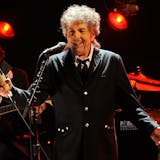Concertgoers may one day be able to catch a show alongside the Mississippi River — at what is now the city's decaying port — if First Avenue and others move forward with a proposal sent to Minneapolis officials last week.
First Avenue is part of the only development team to submit plans to transform the city's Upper Harbor Terminal in north Minneapolis. Other partners include United Properties and Thor Construction. The site, the largest city-owned redevelopment opportunity in Minneapolis, spans 48 acres.
Details beyond an amphitheater remained hazy on Tuesday — the city refused to release the submitted plan — but Council President Barb Johnson said it would include housing and light industrial uses. The city's general plans for the area also call for a new park that would run parallel to the river.
The plan will be released at a public meeting Nov. 3 at Folwell Recreation Center.
Built in the 1960s to bring barges upriver to Minneapolis, the port struggled for many years to attract sufficient traffic. Operations ceased in 2014, though it was recently used for concrete storage, and its tattered domes remain a prominent feature of the upper riverfront.
First Avenue General Manager Nate Kranz said they are pitching an 8,000- to 10,000-seat amphitheater for the site.
"We're really hoping that we can get an amphitheater concert venue out there," Kranz said. "It's something we think the city really needs."
The Twin Cities is the largest U.S. concert market without an amphitheater at least the size of the one being proposed. First Ave's proposed venue would be about half the size of Milwaukee's popular Marcus Amphitheater and similar in capacity to the Starlight Theatre in Kansas City, Mo.



